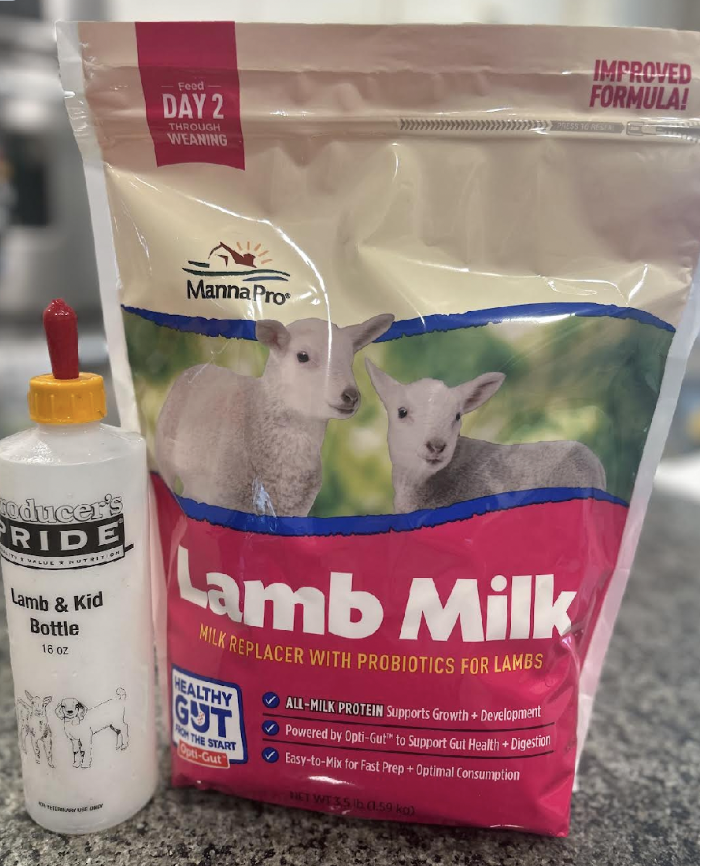Lambing Season: How to Care for Your Newborns
Your growing ewes have had babies, now what?! We’re finally at the tail end of our second lambing season here on Blackbelly Ranch, and it’s been so exciting! We’ve welcomed 4 sets of twins so far! Yes – 4! They are all too cute for words and healthy! We’re still expecting at least 2 more babies in the next week or two.
I’d shared a few months a go the benefits of this type of breed, and one is they are hardy and great mothers. While we’re still relatively new at it, our sheep have not disappointed on this front.
Our ewes have birthed on their own, fortunately for us, and have been amazingly protective over their newborns. We’ve been extremely lucky that we’ve had to do very minimal work with our ewes and their lambs, but that doesn’t mean there’s absolutely nothing to do.
In it’s simplest, we’ve done the following to care for our lambs and mommas:
Maintain a clean and safe place for the mom and her baby
Have bottles and formula as a backup
Provide some additional vitamins and food for your ewes
I’d talked about looking for the signs that your sheep are in labor a few weeks a go. Knowing what to look for is so important because it’s your signal to start preparing your farm for the impending new arrivals. Not unlike human babies, lambs have a weak immune system when they’re born. They rely on their mother’s colostrum in those first few days for their antibodies. That being said, you want to make sure your mom and her baby (or babies) have a clean place to rest after birth that’s clean (and safe) to reduce the potential for bacteria, predators, and ready access to clean food and water.
We have 3 barn stalls that we rotate our sheep out of which means we always have a clean one that’s been aired out that we can just add some fresh straw to. I like to think of it as the farmer’s maternity ward! Not only do we like to keep them separate from the herd for the first 24-48 hours, we’ve noticed that our momma’s prefer that separation initially. This makes them feel safe, they bond with their baby, and it also allows us to check on mom and baby easily. Mortality rate is highest in those first 48-72 hours so having this dedicated space for them is so helpful, while allowing us to keep tabs.
If we’re able, we like to put the mom in her own stall before she gives birth too to make sure the afterbirth is in tact AND we know exactly how many babies she’s had. We can’t always catch this though. We’ve had two instances where the mom has just sauntered off on her own mid-day and when we go to check on our herd, we’ve got a few new surprises in a field. This means we need to play detective to look for that afterbirth. Again, like humans, if it’s not expelled fully, the mom can die.
In the instances when our ewes have given birth in one of our fields, the mom’s have refused to move with her babies for the first few hours. They stomp their feet and lower their heads to keep us (and their own herd) from getting too close! This is always a GREAT sign that she won’t be rejecting any of her babies. Which leads me to that second point: always keep some sheep bottles and formula on hand in the rare instance that the mom rejects her baby. (If you can keep the mom contained, this is another sure fire way to see how she interacts with her babies.)
What Happens if Mom Rejects a Baby?
When a momma rejects one or both of her babies, it’s absolutely heartbreaking! The rest of the herd rejects that baby as well, at least in our experience. One of our ewes last year had twins and she absolutely did not want anything to do with baby number two. She would even go as far as to head butt the baby anytime she came near to try and nurse. The other sheep took notice and also would nudge this lamb away when she tried to get close to them. It was terrible.
There are a lot of reasons a ewe may reject her baby. In this case, I think it’s because she was a first time mom and overwhelmed. It very much could have been that she wasn’t that motherly or she sensed she wouldn’t be able to keep up with milk production so she opted to care for the larger lamb that looked healthier.
As soon as we realized the lamb was going to die, we ran out to Tractor Supply and purchased bottles and formula so that we could care for this sweet baby. We set our alarms for every 2 hours and took turns heading out to feed a few small ounces to help this baby survive.
The final thing we do during lambing season is to make sure we have extra, nutritious supplemental food on hand. The ewes are having to nourish themselves and another mouth or mouths in most instances. We definitely feed extra in the evenings when our sheep head to the barn for the evening. We do a combination of pellets and Timothy hay for our sheep. We give our entire herd this bit of extra nightly though as a treat and incentive to "go home" as it gets dark. We just increase what we're giving during this period.
I'm sure there may be other things more experienced farmers or ranchers do, but this is what we've done and it's been more than sufficient so far. As long as the ewes are attentive, we've been involved very little. We've not lost any babies and everyone has been healthy and happy!



